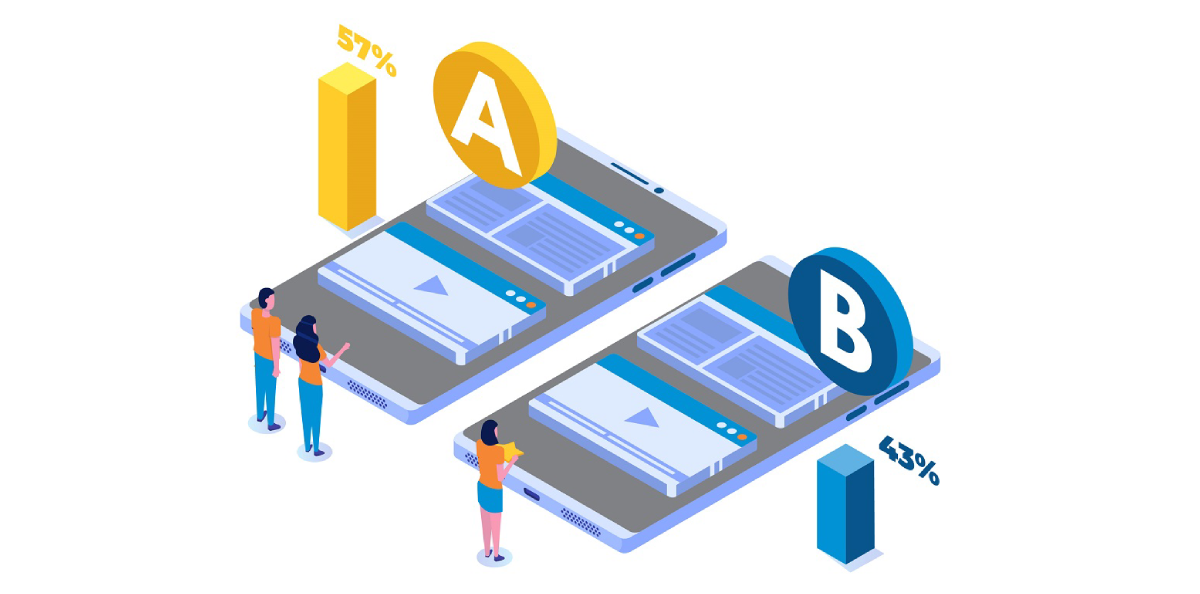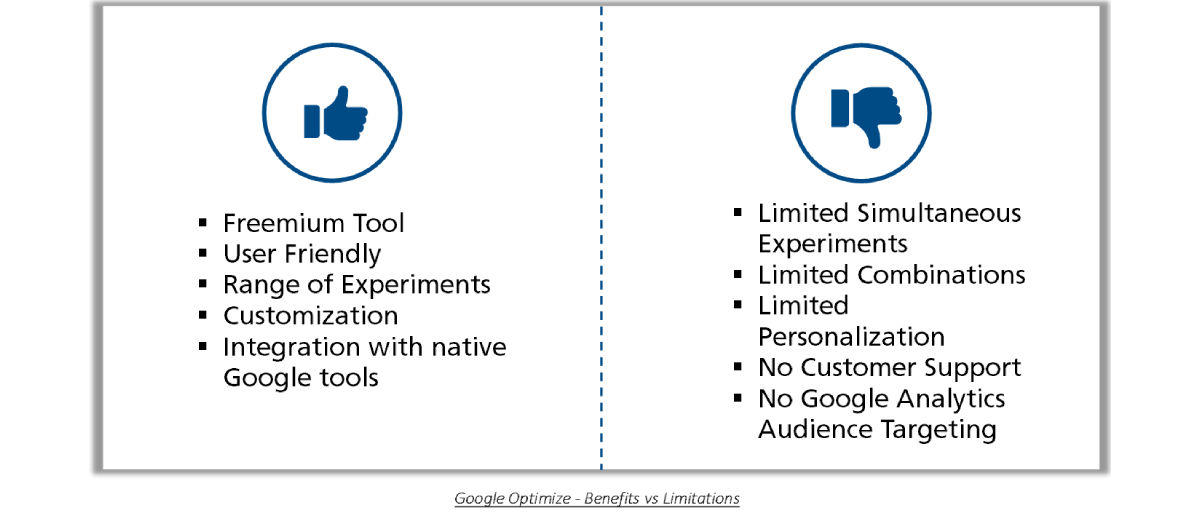Introduction to A/B testing – Getting Started with Google Optimize
Introduction
The past decade undoubtedly belongs to e-commerce in the retail landscape, as we have seenexponential growth in online worldwide. By the year 2026, the industry is expected to grow up to 8.1 trillion dollars[1]. The covid-19 pandemic has also played a key role in pushing consumers and businesses toward online commerce. While the shift in selling has helped businesses build a direct relationship with the end consumers and provide quality goods and services, it has brought along challenges as well. There is a need for constant evolution and innovation in e-commerce strategies to increase conversion rates and decrease bounce rates. The ever-changing behavior of buyers makes it difficult to take the one-size-fits-all approach. Modern day businesses with an online presence are required to experiment using different tools and techniques to understand and develop strategies based on their consumers’ behavior. This is where the A/B testing method helps understand what customers like, prefer, and want. It is a research method that involves experiments that help evaluate and understand customer behavior and define strategies to optimize conversion rates based on the findings.
This article provides you with insights on A/B testing, the Google Optimize AB Testing tool, and how it will help businesses in carrying out an experiment and optimize the conversion rate.
What is A/B Testing?

A/B testing is an experimentation practice, whereby two versions/variants of a particular webpage or a page element are tested on a website and compared against one another. This is done to determine which variant works best for consumers, based on key performance indicators. There are several types of A/B testing options that users can choose from.

You can test any part of a website using any of these methods, but some of the crucial elements that should be considered for testing are Headings, Navigation, Social Proof, Forms, Product Pages, etc.
How A/B testing helps with business decisions
A/B testing is being used as one of the key marketing tools, which helps businesses in taking decisions with first-hand results, based on responses from the consumers. In current times, businesses heavily rely on data rather than guesswork, while building or optimizing a website. Conducting experiments with an A/B testing tool eliminates the confusion about what will work for their consumers and what will not. Let us understand this better with the help of use cases that helped a retailer take informed decisions about their online business.
Use case 1: a leading brand has a quiz feature on their D2C store, which recommends products to users, based on their answers to the quiz. The results are shown immediately after the quiz has been completed. The brand owner saw an opportunity to retarget the users with personalized content based on the quiz in various sections of the D2C store. They wanted to add a registration form, which will request users to register on the site to see the results. This way they could capture and store the user details and send it to the personalization engine.
Adding a registration form could have increased the chances of a higher bounce rate, as most users may not want to register to see the results. The brand owner wanted to evaluate and understand the consumer pulse before implementing this change.
In the above case, A/B Testing proved helpful. The brand owner created three variants using an A/B testing tool to track key metrics (conversion rate, bounce rate).
1. Quiz with Registration form
2. Quiz without Registration form
3. Quiz with Registration form including Promotion
At the end of the experiment, it was found that the “quiz with registration form and promotion” had less bounce rate and a better conversion rate than the others and the brand owner finally deployed this variant.
Use Case 2: a budding business started a D2C store and to gain customer confidence they wanted to have a social proof section on the landing page. They knew that the social proof section could have customer testimonials, social media proof, expert proof, trust certifications, etc. With the help of an A/B testing tool, the business created an experiment with two variants of a landing page.
One variant had a customer testimonials section, which included first-hand reviews from their buyers about the products and services. The second variant included a social media section, showcasing posts and tweets from celebrities, customers, etc. They ran a one-month campaign, redirecting equal traffic to both the variants and measured customer engagement, based on the average number of page visits and average time spent by users on the website. The business wanted to know which of these variants had attracted customers to explore their website and products.
At the end of the experiment, they found that the variant with customer testimonials attracted more engagement and finally created and deployed a redesigned landing page with customer testimonials.
AB Testing with Google- Get started with Optimize tool
Many businesses looking forward to improving their conversion rate would like to try out A/B testing, however, they may be unsure about its benefits. They would require a reliable and pocket-friendly tool, which would allow them to understand the testing method and experiment, before designing a conversion rate optimization strategy. This is where the Google Optimize A/B testing tool proves handy for businesses.
Google has been consistently offering tools like analytics, progressive web apps, page speed tools, etc., allowing store owners to optimize their websites. The Google Optimize A/B testing tool is a free and user-friendly tool that allows store admins to run tests with minimal technical help. The main advantage of this tool is that it can be integrated with native Google Solutions like Analytics and Ads. This allows businesses to reuse the Goals and Audience information and target the right audience for the experiment and leverage the results to display improved reports.
However, being a free tool, targeted at small or medium scale businesses, Google Optimize has various limitations, which restricts the utilization of the full capabilities of A/B testing. Let us look at some of its advantages and limitations to understand better what the tool offers.

Further, if businesses would like to scale and grow by optimizing conversion rate, we have many paid A/B testing tools available in the market, notably Google Optimize 360, Optimizely, VWO, Adobe Target, Oracle Maxymiser, etc. which would help businesses to run sophisticated and complex experiments.
How LTIMindtree is helping clients with A/B Testing
LTI Mindtree has expertise in integrating, consulting, and creating experiments on various A/B testing tools. We have been actively leveraging this method for solving various business problems and advising clients on how and when to use the tool to reap benefits. Here are a few notable A/B testing implementations done by LTIMindtree.
1. LTIMindtree has helped a leading hair care brand increase the “add to cart” clicks by 50% and improve the conversion rate by 48%, by optimizing the product pages using A/B testing with structure page contents and CTA buttons.
2. LTIMindtree found that there was poor user engagement experience on mobile devices of a shaving prep brand. We helped increase the user engagement rate, reduce the bounce rate, and increase the average session time per user. The experiment included implementing the right CTA indications and changing the clickable elements of the CTA button using A/B testing.
3. We have integrated the A/B testing tool for a beauty brand belonging to a leading consumer goods client and actively working on creating experiments and deploying the winning variants.
The way forward
The role of personalization and artificial intelligence is significant in the current D2C era, where most businesses are keen to use it to proactively cater to frequent changes in consumer behavior and buying patterns. A/B testing would require a more proactive, rather than reactive approach, given the dynamics in consumer purchasing behavior. Personalization and AI can be incorporated to build experiments based on consumer behavior by displaying the appropriate variants, to help interact with consumers, and create personalized experiences.
Integrating A/B testing with marketing tools like analytics, segmentation, ads, CRM, etc. will see a bigger value than being used as a standalone solution. It is seen as an automation solution that will fetch the data from various tools, create and deploy experiments quickly, and increase the number of variants.
References
https://www.appsierra.com/blog/what-is-a-b-testing
https://vwo.com/blog/ab-testing-tools/
https://insightwhale.com/google-optimize-advantages-and-disadvantages
https://www.convert.com/blog/a-b-testing/ab-testing-2020/
https://www.braze.com/resources/articles/the-future-of-experimentation
Latest Blogs
he supply chain is a network of suppliers, factories, logistics, warehouses, distributers and…
Introduction What if training powerful AI models didn’t have to be slow, expensive, or data-hungry?…
Pharmaceutical marketing has evolved significantly with digital platforms, but strict regulations…
Leveraging the right cloud technology with appropriate strategies can lead to significant cost…




